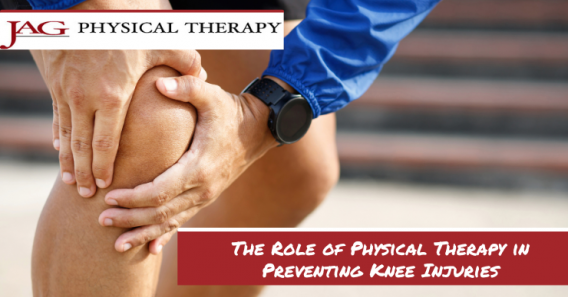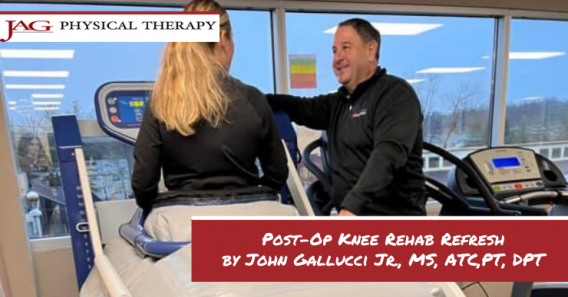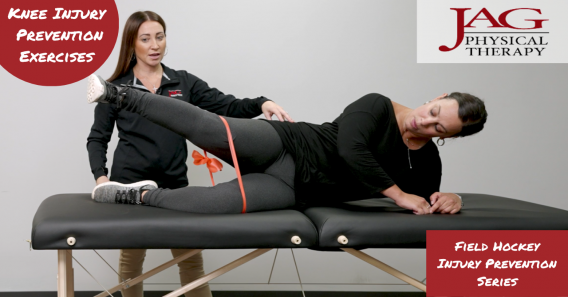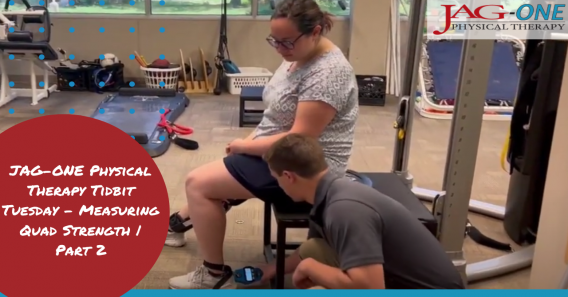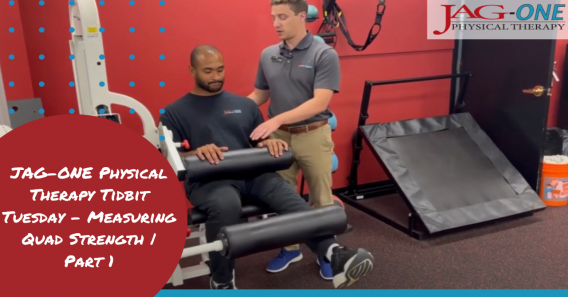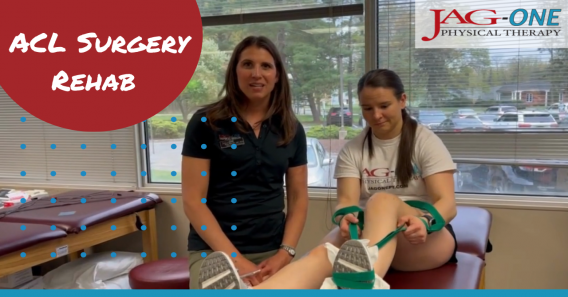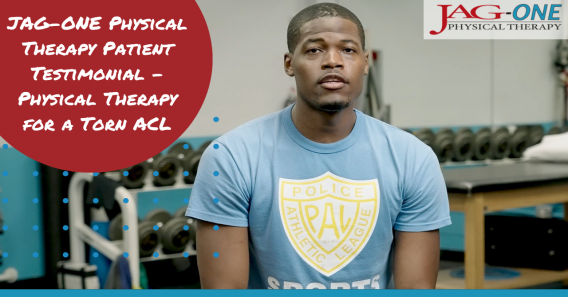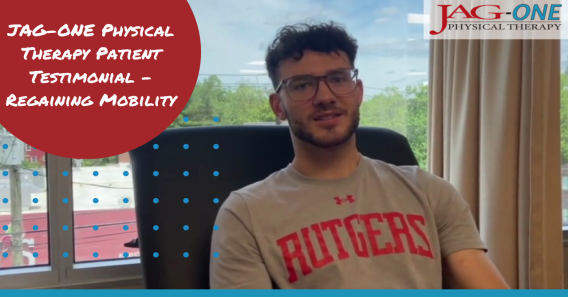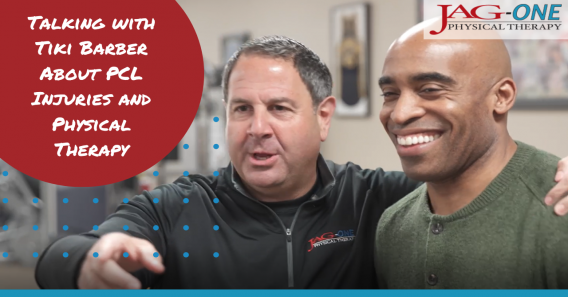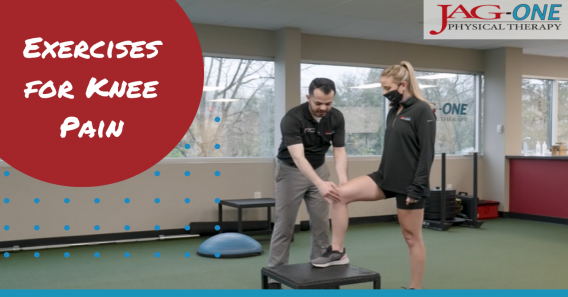The anterior cruciate ligament, or ACL, is a major ligament that maintains knee stability. That’s why athletes who frequently put pressure on this ligament — such as football, soccer, and tennis players — are prone to injuring it.
When you sprain or tear the ACL, you’ll likely have a long road to recovery. An ACL injury can take up to six to nine months to heal, and more severe injuries might require surgery as well as rest.
Whether you need surgical repair for your ACL or not, physical therapy can help you recover faster. But even more vitally, it can help you avoid re-injury and return to your sport with confidence. ACL physical therapy aims to strengthen the muscles and ligaments that affect the knee while increasing stability, mobility, and balance.
With physical therapy, you may be able to return to your sport more quickly. You’ll also have the peace of mind that your body, including your legs and knees, is once again ready to perform at your highest level.
At JAG Physical Therapy, we are the New Jersey, New York, and Pennsylvania area’s leader in specialized PT, including pre- and post-surgery rehabilitation and sports medicine, including return-to-sport therapy. Find your nearest JAG PT clinic location today, or read on to learn more about how we help our patients recover from ACL injury.
How Does Physical Therapy Help in the Recovery from ACL Injuries?
Physical therapy will help to restore the knee’s full range of motion while also strengthening the muscles around the knee. The goals of physical therapy for ACL injuries are to:
- Improve core strength and lower body strength
- Improve body posture and muscle memory so you know how to land correctly after jumping
- Pain reduction through therapies such as ultrasound, hot and cold therapy, and manual therapy techniques
Research on ACL rehabilitation shows that outcomes for ACL patients are generally positive with three to nine months of intensive physical therapy. This is true whether the patients had surgery or not.
ACL Injury Recovery Exercises
At JAG PT, our physical therapists target muscles and areas of the body that support the knee and your body’s overall stability throughout your rehabilitation. You’ll work on:
- Hamstrings and quadriceps muscles
- Core muscles
- Hip strength and range of motion
You’ll also perform exercises that target the knee throughout your recovery. When your knee is still fragile, you might begin with knee exercises you can do while seated or lying down. Here are some examples:
- Isometric quad contractions: This exercise strengthens the muscles around the knee.
- Heel slides: This movement helps to improve mobility without putting weight on the knee.
- Prone knee flexion: This is another non-weight-bearing exercise to help restore mobility and function.
When you’re ready for increased movement, your physical therapist will focus on restoring mobility, strength, and stability of the knee through balance training, range-of-motion exercises, and strength training. You might do:
- Core exercises such as the plank and side plank
- Range-of-motion exercises such as half squats and knee extensions
- Hip exercises, such as hip flexors and abductors, to strengthen the hips
You’ll also learn about exercises that can help with ACL injury prevention and recovery.
What Can Patients Expect from Physical Therapy for ACL Injury Recovery?
The timeline for recovery hinges on the severity of your injury and how quickly you heal. If you have surgery for an ACL tear, you can expect around six months of recovery time, possibly longer. But every few weeks, your knee will be stronger and more functional. Here’s what to expect:
Pre-surgery: You’ll use rest, ice, and gentle exercises that aren’t weight-bearing.
Weeks 1-3 post-surgery: After ACL surgery, there will be swelling, so you might need more therapy techniques to relieve pain and inflammation. Your therapist might have you do several range-of-motion exercises, such as seated full extension and knee flexion exercises.
Weeks 2-6 post-surgery: Physical therapy might include strengthening with light weights and full-range-of-motion exercises. You’ll be able to do some endurance activities, such as using an elliptical or walking on a treadmill.
Week 6 to 3-4 months: You’ll increase your strength training for your knees, legs, hips, and core. You’ll learn techniques to improve your posture and proper form. You might do gait training, pivoting techniques, and mobility drills.
Months 4-6+: This is the last recovery phase. You will continue strengthening and working on mobility and stability. You’ll learn what footwear and protective gear to use to prevent injury. You’ll also learn exercises to help with injury prevention.
When you no longer have soft-tissue or range-of-motion complaints — and you meet your physician’s other criteria — your doctor will clear you to return to your sport.
The recovery timeline is usually shorter if the tear was mild to moderate. In that case, you might not need surgery, and you could be back to your sport in three to four months.
Either way, you’ll still benefit from the same range of treatments and interventions involved in physical therapy for ACL injury. These include manual therapy techniques, therapeutic exercises, and functional training.
Manual Therapy Techniques
Manual therapy involves the use of hands rather than medical devices. Your physical therapist will use their hands to ease your pain and swelling, increase blood flow, and improve mobility. For an ACL injury, they might include soft-tissue mobilization and strain-counterstrain therapy.
Therapeutic Exercises
Therapeutic exercises are meant to restore flexibility, strength, and mobility to the knee. During ACL injury physical therapy, your therapist will help you with balance training, such as standing on one leg; range-of-motion exercises, such as knee extensions; and strength training, including lunges and half squats.
Functional Training
Functional training helps you regain your knee’s function. This type of training might occur later in your recovery — usually around four to six months post-injury. Functional training can involve jumping exercises, starting and stopping, and changing direction.
The Importance of Personalized Physical Therapy When Recovering from a Knee Injury
JAG PT is always committed to helping you recover with a PT plan that’s customized to your needs. Throughout your rehabilitation, you might work on everything from dynamic strength to your knee’s power and performance. There may also be sessions that focus more on pain relief, posture, balance, and mobility. However, the specifics depend on you, your body, and your sport.
Some people heal faster than others. Usually, younger athletes recover more swiftly than adults. Depending on the severity of the injury, you might experience more pain and inflammation or benefit from certain therapy techniques.
You might be able to progress through therapy at a faster rate, depending on your body and commitment to recovery.
You’ll require specific functional training exercises based on your sport. For example, a gymnast will require more jumping exercises. A soccer player might benefit from more agility training.
These differences are why it’s important to have an individualized rehabilitation plan. It should reflect your injury. And your body.
A physical therapist with experience in sports medicine will be able to create a personalized plan that lets you progress at the right pace for you. They’ll know which manual therapy techniques, therapeutic exercises, and functional training to use to optimize your ACL injury recovery outcome.
How Does Physical Therapy Enhance ACL Injury Recovery Compared to Resting Without Intervention?
With ACL physical therapy, you can expect a faster recovery, reduced pain and swelling, and training that will help your body restore its original functioning, or close to it. Using targeted neuromuscular and strength training can increase dynamic stability in the short and long term. That means you’ll be less likely to damage your ACL again in the future or require future surgery.
Studies on pre-operative rehabilitation show that physical therapy before surgery, as well as after, can make a big impact. Here are some of the positives:
- Improved knee and muscle strength — patients with pre-operative physical therapy have higher single-leg jump values at 12 weeks.
- You might feel more mentally prepared for surgery and more mentally prepared to return to your previous activity levels.
- Return to sport, on average, happens at 34 weeks instead of 43 weeks for those without physical therapy.
- People with an ACL injury who used physical therapy during their recovery are also less likely to develop osteoarthritis later on.
Can Physical Therapy Help Prevent Future ACL Injuries?
There’s always the risk of a future ACL injury, even with physical therapy. However, because you’re strengthening the knees, as well as the muscles that impact your knee’s stability and power, you’re less likely to get injured again.
About four out of every five athletes who return to intense sports don’t experience a second tear. With the right amount of rest, recovery, and physical therapy, you can increase the likelihood that you’ll be able to get back to the activities you love without getting injured again.
Take the First Step to ACL Injury Recovery with JAG Physical Therapy
JAG PT is the leading provider of physical therapy in New York, New Jersey, and Pennsylvania. Our experienced team can help you recover after an ACL tear or any other injury, and we always deliver care with skill and compassion. Contact us to learn more or schedule an appointment to start on the path to recovery today.

